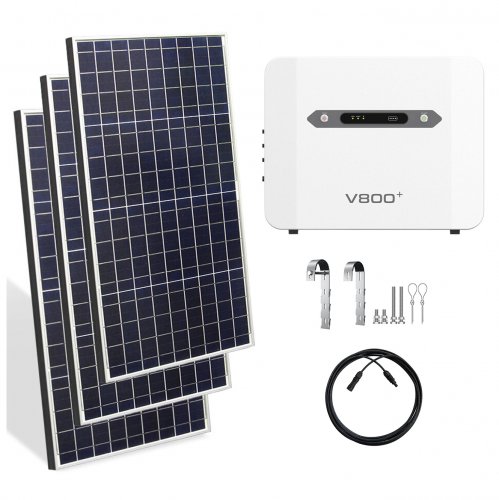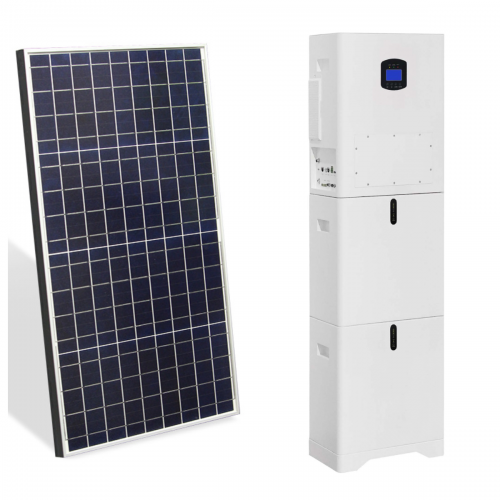Advances In Nanostructured Electrodes: Enhancing Performance In Energy Storage And Conversion
Introduction
Nanostructured electrodes represent a cornerstone of modern electrochemistry, driving innovations across energy storage, conversion, and sensor technologies. By manipulating materials at the nanoscale, researchers can drastically enhance electrode properties, including surface area, electrical conductivity, ion diffusion kinetics, and mechanical stability. This article reviews recent breakthroughs in the synthesis, characterization, and application of nanostructured electrodes, highlighting their transformative impact and future potential.
Recent Research and Technological Breakthroughs
1. Next-Generation Battery Technologies: The push for higher energy density and faster charging has led to significant advances in lithium-ion and post-lithium batteries. A key innovation involves designing 3D hierarchical nanostructures to accommodate volume expansion in high-capacity materials. For instance, silicon anodes, which suffer from severe pulverization during cycling, have been revolutionized by nanostructuring. Recent work by Cui et al. demonstrated a yolk-shell structure where a silicon nanoparticle is encapsulated within a hollow carbon shell, allowing for expansion and contraction without rupture, thereby achieving exceptional cyclability (Liu et al.,Nature Energy, 2022). Similarly, for lithium-sulfur batteries, nanostructured carbon hosts with tailored pore geometries have been engineered to confine polysulfides and facilitate redox kinetics, addressing the long-standing shuttle effect challenge (Zhang et al.,Advanced Materials, 2023).
2. Electrocatalysis for Green Energy: In the realm of electrocatalysis, nanostructured electrodes are pivotal for reactions such as the oxygen evolution reaction (OER), hydrogen evolution reaction (HER), and CO₂ reduction (CO2RR). The focus has shifted from noble metals to earth-abundant alternatives with structures optimized for maximum active site exposure. A landmark achievement is the development of heteroatom-doped carbon nanostructures and transition metal compounds. For example, single-atom catalysts (SACs), where individual metal atoms are anchored on nitrogen-doped graphene, have emerged as a new frontier. These electrodes provide near-100% atom utilization and exceptional activity for the OER and CO2RR. A recent study showcased a Ni-SAC electrode that achieved a turnover frequency for OER an order of magnitude higher than state-of-the-art oxide catalysts (Jiao et al.,Science, 2023).
3. Supercapacitors with Unprecedented Performance: Supercapacitors benefit immensely from nanostructured electrodes that offer high surface area and efficient ion transport pathways. The latest research transcends traditional activated carbons, exploring MXenes, graphene aerogels, and metal-organic frameworks (MOFs). A notable breakthrough is the fabrication of freestanding, flexible electrodes composed of vertically aligned graphene sheets or interwoven MXene flakes. These structures provide directed channels for ion diffusion, resulting in ultrahigh power density and remarkable rate capability. Furthermore, the integration of pseudocapacitive nanomaterials, like MnO₂ nanosheets or conductive polymers, into these 3D scaffolds has successfully bridged the gap between energy and power density (Gogotsi et al.,Nature Reviews Materials, 2022).
4. Advanced Manufacturing and Characterization: Synthesis techniques have evolved from simple sol-gel methods to sophisticated, scalable processes. Atomic layer deposition (ALD) allows for the conformal coating of complex nanostructures with sub-nanometer precision, enabling the creation of core-shell and multilayer architectures. Additive manufacturing, particularly 3D printing, is now being used to fabricate electrodes with digitally controlled, macro-porous geometries that optimize mass transport without sacrificing active material loading (Lewis et al.,Science, 2022). Concurrently, advanced in situ and operando characterization techniques, such as transmission electron microscopy (TEM) and X-ray absorption spectroscopy (XAS), are providing unprecedented insights into the structural evolution and degradation mechanisms of these nanomaterials under operating conditions.
Future Outlook and Challenges
The trajectory of nanostructured electrode research points toward increasingly intelligent and multifunctional designs. Several key areas will define the future of this field:Multifunctional and Graded Architectures: Future electrodes will likely be engineered with composition and porosity gradients to optimize different functions within a single structure—for instance, a highly conductive core, a catalytically active shell, and a surface layer tuned for specific ion selectivity.Sustainability and Circular Economy: As the scale of production increases, the environmental impact of nanomaterial synthesis must be addressed. Research into green synthesis routes using biomolecules and the development of easily recyclable electrode architectures will be paramount.Integration with AI and Robotics: The vast design space for nanostructures is ideal for exploration using machine learning. AI-driven models can predict optimal morphologies and compositions for target applications, while robotic high-throughput experimentation can rapidly synthesize and test these hypotheses, dramatically accelerating the discovery cycle.Interface Engineering: Understanding and controlling the solid-electrolyte interphase (SEI) in batteries and the electrical double layer in supercapacitors at the nanoscale remains a fundamental challenge. Precise interface engineering through nanostructuring and electrolyte design will be crucial for achieving ultra-stable long-term performance.
In conclusion, nanostructured electrodes continue to be a vibrant and critically important area of materials science. The recent progress in tailoring their structure, composition, and interface has led to remarkable improvements in the performance of electrochemical devices. Overcoming the challenges of scalability, stability, and sustainability will pave the way for their deployment in next-generation technologies that are essential for a sustainable energy future.
Customized/OEM/ODM Service
HomSolar Supports Lifepo4 battery pack customization/OEM/ODM service, welcome to contact us and tell us your needs.


HomSolar: Your One-stop LiFePO4 Battery Pack & ESS Solution Manufacturer
Our line of LiFePO4 (LFP) batteries offer a solution to demanding applications that require a lighter weight, longer life, and higher capacity battery. Features include advanced battery management systems (BMS), Bluetooth® communication and active intelligent monitoring.

Customised Lithium Iron Phosphate Battery Casing
ABS plastic housing, aluminium housing, stainless steel housing and iron housing are available, and can also be designed and customised according to your needs.

HomSolar Smart BMS
Intelligent Battery Management System for HomSolar Energy Storage System. Bluetooth, temperature sensor, LCD display, CAN interface, UART interface also available.


Terminals & Plugs Can Be Customized
A wide range of terminals and plugs can be customised to suit the application needs of your battery products.

Well-designed Solutions for Energy Storage Systems
We will design the perfect energy storage system solution according to your needs, so that you can easily solve the specific industry applications of battery products.



About Our Battery Cells
Our energy storage system products use brand new grade A LiFePO4 cells with a battery lifespan of more than 4,000 charge/discharge cycles.



Applications in Different Industries
We supply customized & OEM battery pack, assemble cells with wiring, fuse and plastic cover, all the cell wires connected to PCB plug or built BMS.
Applications: E-bike, Electric Scooter, Golf Carts, RV, Electric Wheelchair, Electric Tools, Robot Cleaner, Robot Sweeper, Solar Energy Storage System, Emergency Light, Solar Power Light, Medical Equipment, UPS Backup Power Supply.
We can provide you with customized services. We have the ability to provide a vertical supply chain, from single cells to pack/module and to a complete power solution with BMS, etc.


HomSolar (Shenzhen) Technology Co., Ltd
























